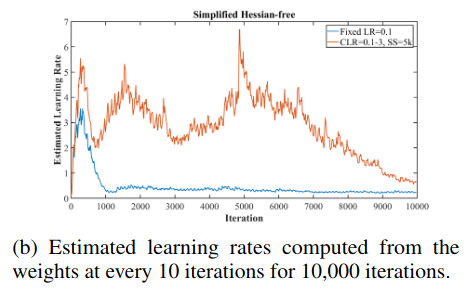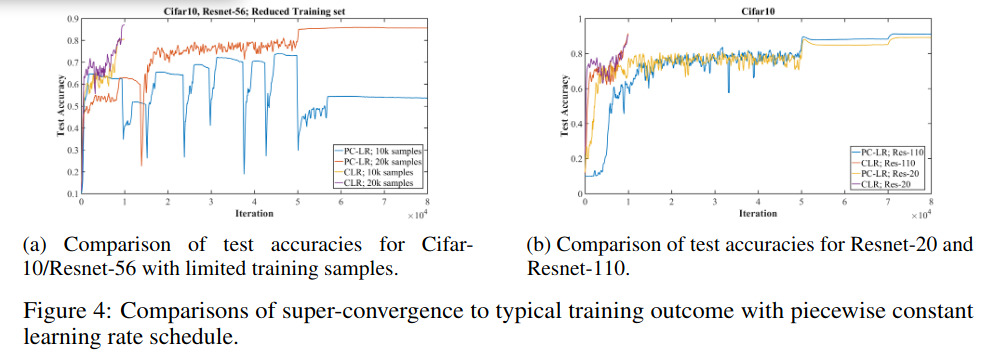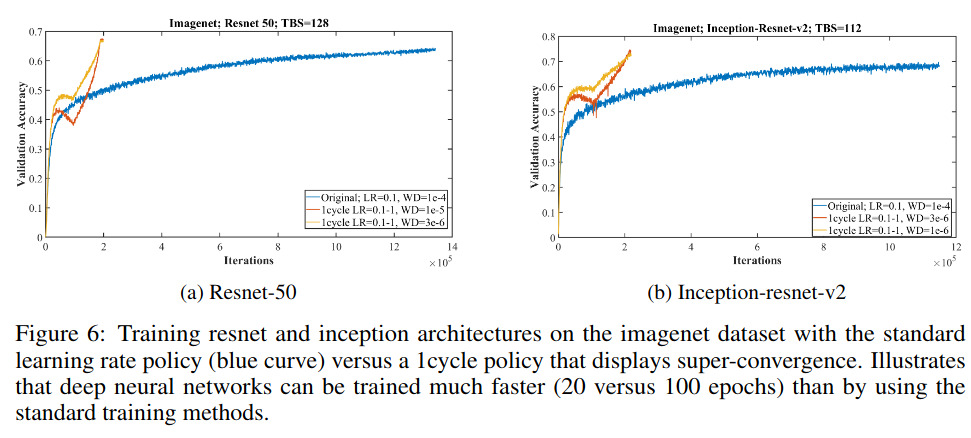OnceCycleLR: Super-Convergence: Very Fast Training of NeuralNetworks Using Large Learning Rates
Highlights
The paper behind the pytorch OneCycleLR learning rate scheduler
Introduction
The goal here is to adjust the learning rate \(\epsilon\) of a simple stochastic gradient descent:

They start with the AdaSecant method by Gulcehre et al. which builds an adaptive learning rate method based on the finite difference approximation of the Hessian matrix (denominator):

Then, by combining Eq.(4) and (7), they get the following updating rule:

The learning rate is then updated with the following moving average:

Doing so with a fix learning rate at the beginning of the optimization process gives the blue curve in the following figure:

However, in their case, they use 2 learning rates : \(LR_{min},LR_{MAX}\) which they linearly interpolate during a cycle. During the first half of the cycle, the LR goes up from \(LR_{MIN}\) to \(LR_{MAX}\) and during the second half the LR goes down.
Doing so leads to the orange curve in the previous plot which corresponds to a larger learning rate than the blue curve and thus a faster convergence.
Results
Quite amaizing indeed! PC means : piecewise-constant training regime (LR is fixed and then reduced by a factor of X when the validation error plateaus)

